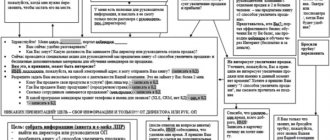- The concept of temperament according to Hippocrates
- Brief characteristics of the four temperaments: description and main features
- The relationship between the concepts of temperament and character
Types of temperament according to Hippocrates are the oldest of psychological typologies. Phlegmatic, choleric, sanguine and melancholic - these words are familiar even to those who are very far from psychology. Meanwhile, at different times, many psychologists, psychiatrists and physiologists tried to create an assessment system of human characteristics. At the same time, each highlighted his own properties and characteristics of personality temperaments and, in accordance with this, emphasized different character traits.
For example, Carl Jung and Hans Eyseneck considered personality from the point of view of psychological attitude and divided people into introverts and extroverts, Ernst Kretschmer believed that character depends on physique and identified asthenics, athletes and picnics, and Aristotle considered 6 types that answer the questions “Who ?”, “What?”, “Why?”, “When?”, “How?” and where?". However, it is the Hippocratic teaching about the types of temperament that has remained the main typology of man
. As you know, the ancient Greek doctor and healer identified 4 types of human temperament: sanguine, choleric, phlegmatic and melancholic. Let us consider the characteristics and traits of individuals belonging to different types, and how Hippocrates came to such a division of temperaments in general.
The concept of temperament according to Hippocrates
According to the theory of Hippocrates, temperament is the characteristics of human behavior associated with the predominance of one or another basic fluid (vital juice) in his body. Depending on this, according to the scientist, certain features were characteristic of the individual. The scientist believed that a high concentration of lymph
makes a person calm and balanced,
yellow bile
- unrestrained and impulsive,
blood
- cheerful and mobile,
black bile
- melancholic and sad.
Based on this concept, 4 types of temperament , which are widely known to this day - phlegmatic, choleric, sanguine and melancholic.
At the beginning of the 20th century, the Russian scientist Ivan Pavlov connected the types of temperament according to Hippocrates with the general properties of nervous processes and proved that each person has an innate type of nervous system, weakly dependent on upbringing and the influence of others. By the physiological basis of each temperament, he understood the type of higher nervous activity, which is determined by the ratio of balance, strength and mobility of inhibitory and excitatory processes
. Thus, sanguine people, in his opinion, belong to a strong, mobile and balanced type, and melancholic people belong to a weak type, with weak strength of the processes of excitation and inhibition.
Temperament types
Temperament is a set of dynamic personality traits: speed of reactions, speech, movements, stability of emotions, a tendency towards spontaneity or, conversely, inertia in actions. A person's temperament has nothing to do with his moral qualities or intelligence.
Hippocrates, based on the ideas of his time about human nature, associated temperament with what kind of liquid predominated in the body: blood, mucus, bile or black bile. By the way, the names of the temperaments are derived from Greek or Latin words for these liquids.
Sanguine - from lat. "sangvis" ("blood"). Strong, balanced type with a predominance of excitement. An active, energetic person with expressive facial expressions and dexterous, harmonious movements. It has a lively reaction and adapts well to external conditions.
Phlegmatic - from Greek. “phlegm” (“phlegm”, “mucus”). Like the sanguine person, this is a strong, balanced type, but at the same time somewhat slow, imperturbable, pedantic - one of those who are often called “the brake”. It is usually difficult to piss him off. But if a passion flares up in the heart of a phlegmatic person, it will be strong, uncontrollable, most likely for the rest of his life. In addition, psychologists like to joke among themselves, they say, “there is no worse beast than an angry phlegmatic person.”
Choleric - from Greek. “chole” (“bile”). Strong, unbalanced, agitation-dominated type. An impetuous, sharp, very fast, slightly “twitchy” person. Feelings and hobbies flare up in him instantly and fade away just as quickly. The choleric person has a hard time with immobility and inaction, but a significant part of his irrepressible energy is spent on empty vanity.
Melancholic - from Greek. “melena chole” (“black bile”). Weak, unbalanced type. A vulnerable, self-absorbed, impressionable person, prone to causeless despondency and blues. A melancholic person reacts sluggishly and extremely reluctantly to what is happening around him, because he is too immersed in the world of his own emotions.
Temperament, being an innate property and having a physiological basis, is weakly susceptible to changes throughout life. No one can “re-educate” a melancholic person into a sanguine person. But since each of the types of temperament does not exist in its pure form, but is manifested in various mental processes, the intensity of these manifestations can be extinguished consciously. Thus, a person, noticing a tendency to waste strength and energy in vain (choleric), can make it a rule, before taking up another activity or hobby, to describe in detail a plan of action on paper. This way he will have time to cool down a little and also evaluate whether he has enough real strength to realize his undertaking.
On the other hand, manifestations of temperament are often smoothed out on their own, under the influence of upbringing, stereotypes and norms of behavior accepted in society. For example, melancholic people by nature would be happy to lead an oyster lifestyle - lying on the sofa all day long and counting the autumn leaves falling outside the window. But such people rarely command respect. Therefore, those in whose body, according to Hippocrates, black bile predominates, have to adapt to existing norms and lead a more active life: study, work, maintain communication with other people. But it happens the other way around, when external factors do not smooth out, but aggravate the manifestations of temperament. Back in the mid-twentieth century, this was noticed by the outstanding Russian psychologist Sergei Rubinstein: “Liveness, turning into swagger, or slowness of movements, taking on the character of majesty […] are due to many reasons, including the morals of the social environment in which a person lives, and social status which he occupies."
Nowadays, the doctrine of temperaments in academic psychology is gradually falling out of use. Psychologists prefer to determine the psychotype of their clients using more complex and modern systems. But in everyday life, the division into temperaments is still widely used, even in everyday speech. Suffice it to say: “Sidorov? Yes, he is a phlegmatic person! Who came up with the idea to send him for pizza?” — and it immediately becomes clear to those around you that lunch has been postponed for at least three hours.
Temperament and character
The concept of “temperament” is often identified with character
.
But whichever psychologist’s classification you consider, this is a wrong point of view. Of course, there is a relationship between character and temperament, but these concepts do not mean the same thing. Thus, temperament is given to a person by nature and throughout life, if it changes, it is insignificant, but character is formed and transformed all the time. People with the same temperament can have completely different characters, which is due to the influence of society, upbringing, profession, interests, hobbies. And imagine how similar all people would be if we all had only 4 character types with minor differences.
Brief biography of Hippocrates
Today, all doctors who join the ranks of professionals are required to take an oath in the name of the great healer of all times and peoples.
The brilliant author of the humoral theory of temperament was born in 460 BC. e. on the island of Kos, located near modern Turkey. The father of the future luminary of medicine, Heraclitus, was also a healer. Hippocrates' mother Phenareta was apparently involved in raising children.
Having received his first knowledge of medicine within the walls of his home from his father and grandfather, the young “Horse Tamer” (and this is how the name of the healer is translated) went to the temple named after the god of medicine, Asclepius. In addition to medicine, Hippocrates studied philosophy, rhetoric, and arithmetic. The young man’s teachers were Gorgias and Democritus, who taught the young man the basics of sophistry.
After studying in the temple, the healer went to travel to different countries to acquire new knowledge.
Returning to his homeland after long wanderings, Hippocrates created a doctrine of medicine that changed the consciousness of the doctor’s contemporaries. Until now, all diseases were regarded as the machinations of evil spirits and punishment of the gods. The scientist in his treatises tried to prove that all ailments have a natural basis. By inventing new treatment methods and creating prescriptions for medicines, Hippocrates helped a considerable number of compatriots overcome the disease. He did not refuse strangers either.
During his long life, the healer had many students. Among his followers were Galen, Dexippus of Cos, Syennesides of Cyprus. The sons of the famous physician Thessalus and Dragon, as well as his son-in-law Polybius also became healers. All descendants of Hippocrates were named after him.
Hippocrates died in 377 BC. e., leaving behind a number of treatises and teachings. Along with the Hippocratic oath, the theory of stages of diseases, methods of examining patients (auscultation, percussion, palpation), the humoral theory of temperament is also known. By the way, it was the healer who began the study of this characteristic of a person.
So, the doctor from the island of Kos became the founder of the concept of individual personality. It was up to his followers to improve and supplement the teaching. The first adherent of the idea was the most famous physician of antiquity, Claudius Galen. It was he who developed the first typology of temperaments. His views are set out in the famous treatise “De temperamentum” (from the Latin temperamentum - “proportionality, the right measure”). This is how the theory of temperament according to Hippocrates and Galen appeared. The classification of temperaments was subsequently called humoral.
Based on the teacher’s ideas about the relationships of liquids, or “reds,” the student’s typology initially included 13 types of temperament. Having described each type of individual characteristic, Galen, however, did not bother to describe their psychological specificity. This is the individual difference in humoral theories of temperament.
Over time, this omission was made up for. Particular credit for the development of the concept of temperament belongs to the German enlightenment philosopher Immanuel Kant. Observing people, the thinker came to the conclusion that sanguistic and melancholic reactions are generated by the feelings of the individual, while phlegmatic and choleric reactions belong exclusively to the sphere of human actions.
- A sanguine person is characterized by fun and carelessness.
- A melancholic person is often gloomy and anxious.
- Choleric flares up quickly and becomes extremely active for a short time.
- A phlegmatic person is cold-blooded and lazy.
Even before Claudius Galen, the great healer made an attempt to classify the individual characteristics of a person depending on the amount of a particular liquid:
- The predominance of yellow bile (from the Latin chole - “chole”) means the presence of choleric temperament.
- A large amount of blood (from the Latin sanguis - “sangvis”) is the cause of the sanguistic temperament.
- Black bile (from the Latin melanos chole - “melanos chole”) leads to a melancholic temperament.
- The predominance of mucus (from the Latin phlegma - “phlegm”) indicates the phlegmatic development of the personality.
Despite the fact that Hippocrates’ theory of temperament types appeared in the fifth century BC. e., the classification of these individual human differences has survived to this day. The difference is that the modern interpretation of the concept states that a person has all types, but with a predominance of one of them.
Hippocrates' humoral theory of temperament became the source of other equally important concepts. Research scientists, studying this problem, relied on the ideas of the great healer of all times and peoples.
The fluid idea of individual human characteristics has become a kind of prototype and the beginning of modern teachings on this issue. And although she was somewhat naive, she laid down the concept of the psychosomatic unity of the individual, that is, the unity of the human soul and body.
The Hippocratic theory was most clearly reflected in the constitutional concepts that arose at the turn of the 19th and 20th centuries. Then German, French and Italian researchers put forward the idea of a connection between a person’s physique and his temperament.
The author of the constitutional theory of temperament is the German psychiatrist E. Kretschmer. in 1921, his work “Body Structure and Character” appeared, in which the researcher argued that each of the two diseases - manic-depressive (circular) psychosis and schizophrenia - is caused by a certain body type. Based on numerous measurements of different parts of the human body, E. Kretschmer identified four constitutional types:
- Leptosomatic - characterized by a cylindrical body shape and a fragile physique. The main feature of the type is its angular profile. The author of the theory proposed to call such individuals asthenics (from the Greek word astenos - “weak”).
- Pickwick, on the contrary, is a large and corpulent man. The barrel-shaped body and stooped posture distinguishes the Pickwick from other people.
- Athletic – has well-developed muscles and no fat. The characteristic features of an athletic man are a wide shoulder girdle and narrow hips.
- Dysplastics are characterized by an asymmetrical, irregular body structure. They may have either an excessively tall height or a disproportionate physique.
At one time, E. Kretschmer argued that leptosomatic people often suffer from schizophrenia, while athletes are prone to epilepsy.
See also: Very strong prayers for successful trading
Twenty years later, another constitutional theory of temperament appeared in the United States. American psychologist William Sheldon, the author of this concept, defined temperament as a function of the human body, depending on the body structure. Complex anthropomorphic measurements and photographic techniques helped Sheldon in 1941 to identify three types of body structure, or somatotype:
- Endomorphic, which is characterized by excessive development of internal organs. Outwardly, such people look weak and have a large layer of adipose tissue.
- The mesomorphic type is characterized by a well-developed muscular system. These are perhaps the strongest people both physically and mentally.
- The ectomorphic type is accompanied by a fragile body and poor development of internal organs. Such people are sensitive and easily excitable.
There is also an additional type - mixed, or average type of development of the body. It equally combines the features of the three types listed above. However, this type is not common.
Based on research, Sheldon came to the conclusion that the combination of extraversive or introversive properties of a person with three somatotypes gives rise to the identification of three main types of temperament:
- Viscerotonics are people whose internal feelings predominate.
- Somatotonics are individuals aimed at physical action.
- Cerebrotonic people are people who are prone to thinking and analysis.
Constitutional theories are one way or another based on the teachings of Hippocrates on temperament. The ancient healer remains the founder of all subsequent concepts of individual human differences.
Sanguine person and his specifics
The ancient Greek physician Hippocrates identified four human temperaments. Each of them has individual characteristics.
One of the brightest temperaments is the sanguine person. He is distinguished by his balance, optimism, and cheerfulness. Sanguine people are cheerful, emotional, and sociable people. Such a person takes failures quite easily and is the creator of a comfortable microclimate in the group. However, when making promises, due to personal problems, he cannot always keep them.
Sanguine is the strongest of all four temperament types. The humoral theory explains this specificity by the presence in the human body of the most noble and permanent juice - blood.
The main characteristics of this type are high performance, great mental activity, a tendency to communicate and flexibility of mind. Sanguine people can quickly make decisions and adapt to almost any conditions. On the other hand, they are characterized by constant impermanence. All their actions are determined primarily by external conditions.
See also: Compatibility of Libra and Gemini in love and marriage according to the horoscope
Sanguines are also prone to sudden mood swings. However, they experience both joy and grief for a short time, but vividly and emotionally. They try to simplify all the tasks that sanguine people face.
By nature, such people are materialists. They are not characterized by daydreaming and fantasies. Sanguine people are very worried in a situation of lack of material pleasures. Lack of funds depresses them to a greater extent than representatives of other types of temperament. The strengths of sanguine people include excellent oratory, the ability to quickly navigate in an unfamiliar situation, lively facial expressions and expressive gestures.






